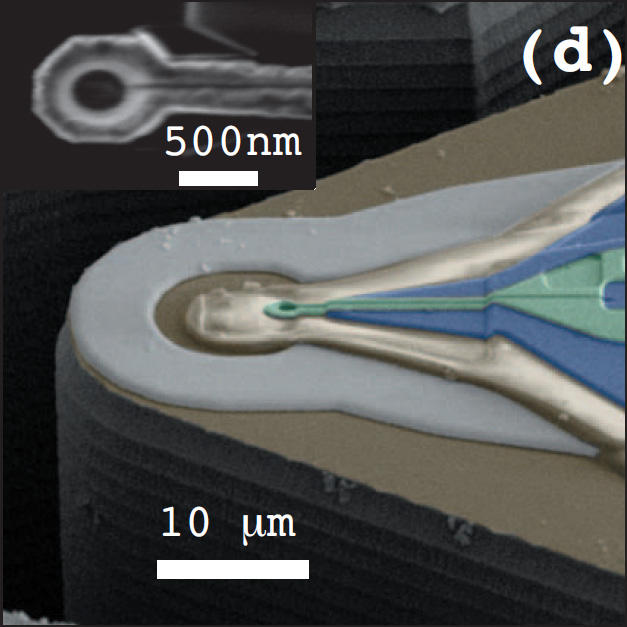Publications
- Fluxoid flucutations in mesoscopic superconducting rings
- Direct imaging of the coexistance of ferromagnetism and superconductivity at the LaAlO3/SrTiO3 interface
- Local measurement of the superfluid density in the pnictide superconductor Ba(Fe1-xCox)2As2 across the superconducting dome
- Spinlike susceptibility of metallic and insulating thin films at low temperature
- Persistent currents in normal metal rings
- A terraced scanning superconducting quantum interference device with submicron pickup loops
- Signal and charge transfer efficiency of few electrons clocked on microscopic superfluid helium channels
 Summary
SummarySuperconducting QUantum Interference Devices (SQUIDs) are the world's most sensitive flux detector. They are made of a superconducting loop with two weak links. Our lab has pioneered the design of a gradiometric scanning SQUID. In this case the superconducting loop is shielded except for a small circular area called a pick-up loop. This pick-up loop can be brought close to a sample of interest and scanned above the surface. As the loop is scanned we record the flux that passes through the loop thus creating a magnetic image of the sample. The overall sensitivity of a SQUID magnetometer is determined by it's magnetic flux noise, the pickup loop diameter, and the distance from the sample. We designed a new scanning SQUID with a 200 nm pick-up loop diameter. (Pictured on the left). This new SQUID has a sensitivity of just 70 electron spins per root hertz. The image shows a scanning electron micrograph of our SQUID's pick-up loop. This loop represents the imaging kernel for our magnetic scanner. |
| Nicholas C. Koshnick, Martin E. Huber, Julie A. Bert, Clifford W. Hicks Jeff Large, Hal Edwards, and Kathryn A. Moler, Applied Physics Letters 93 243101 (2008). Full Text |